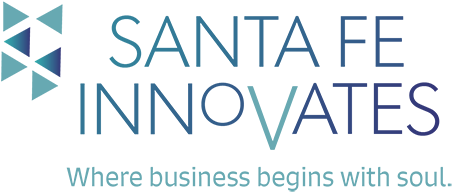Last week, I, alongside a few Santa Fe Innovates’ colleagues, attended the SOCAP Virtual Conference. It was an opportunity for social impact investors, entrepreneurs, and overall champions to (virtually) join together for five days to listen, network, and collaborate on various topics with our social impact-driven comrades around the globe. Sessions took place throughout the day, each day accommodating for global time zones, which allowed for both a global and local feel. Conference topics ran the gamut and zeroed in on a variety of topics, from political systems to philosophical to the practical/applied.

From basic “how-to” workshops (e.g., “How to be a Social Entrepreneur”), to discussions about model change (“Who Owns Social Enterprises? Moving from Beneficiaries to Shareholders”) to the heartier discussions around co-creating much-needed change, there was something for every citizen of the social impact ecosystem. A few of our very own NM neighbors, Drew Tulchin and Genevieve Chavez Mitchell, participated in a panel-workshop called “Alternative Term Sheets,” highlighting how investors are being proactive when funding startups, and called on participants to take part through small-group brainstorming and collaboration.
The common threads of the importance of resilience and sustainability were woven through the program’s content in response to the pandemic and current economic climate, and lessons learned reflected the need for continued – and diverse – conversations. Change is upon us, and as we brace for the current and upcoming waves of infection, now is the time not only to look forward but to glean lessons from those that came before us.
One of the more intriguing arcs for me involved indigenous values and how they could help drive a new way of seeing the world. In “The System isn’t Broken: This is how it was Built. How do we Rebuild?,” thought leaders discussed the need for a new way of operating and how a community-driven approach could cause a significant shift in impact. Impact investing is currently investor-led: investors choose their causes or investments based on factors driven by the investors. If instead, impact investing was driven by the community, the focus could shift onto things that could directly benefit that particular community – and perhaps others. As it relates to impact investing, the broad-brush approach has to be challenged.
Another critical challenge is that, in our current models, returns are extracted from the community and are often not reinvested. That said, if the community is essential to you, it’s important to know where your money is sitting at night. It’s vital to make sure that your values align with your financial entity or banking institution’s values, and that, whatever your contribution, it is being invested in projects and enterprises that you believe in. Taking a more active role in this way may seem small, but when we start to feel that we do have ownership over the things we invest in, big changes can occur.
We’re certainly at an inflection point, which was well-highlighted throughout the conference. The call to action is clear – the need for innovation and continued collaboration and co-creation is now stronger than ever. We as a society have been tested, and continue to be tested, but we are resilient as long as we work together as a collective.

